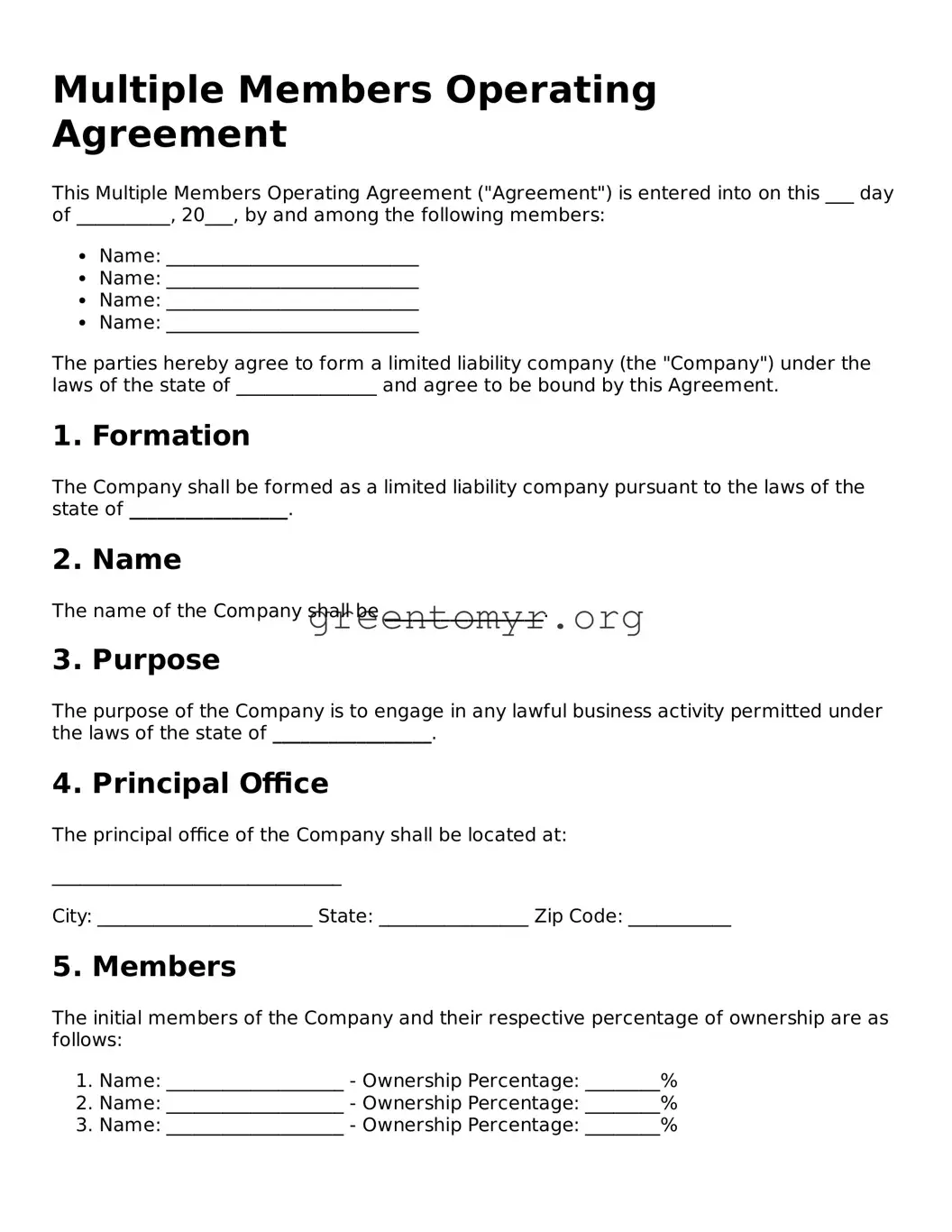Multiple Members Operating Agreement
This Multiple Members Operating Agreement ("Agreement") is entered into on this ___ day of __________, 20___, by and among the following members:
- Name: ___________________________
- Name: ___________________________
- Name: ___________________________
- Name: ___________________________
The parties hereby agree to form a limited liability company (the "Company") under the laws of the state of _______________ and agree to be bound by this Agreement.
1. Formation
The Company shall be formed as a limited liability company pursuant to the laws of the state of _________________.
2. Name
The name of the Company shall be _________________.
3. Purpose
The purpose of the Company is to engage in any lawful business activity permitted under the laws of the state of _________________.
4. Principal Office
The principal office of the Company shall be located at:
_______________________________
City: _______________________ State: ________________ Zip Code: ___________
5. Members
The initial members of the Company and their respective percentage of ownership are as follows:
- Name: ___________________ - Ownership Percentage: ________%
- Name: ___________________ - Ownership Percentage: ________%
- Name: ___________________ - Ownership Percentage: ________%
6. Management
The Company shall be managed by all members. Decisions shall be made by a majority vote of the members unless otherwise stated in this Agreement.
7. Capital Contributions
Each member shall make an initial capital contribution as follows:
- Name: ___________________ - Contribution Amount: $______________
- Name: ___________________ - Contribution Amount: $______________
8. Distributions
Distributions of profits and losses shall be allocated to the members in proportion to their percentage of ownership.
9. Amendments
This Agreement may be amended only by a written agreement signed by all members.
10. Governing Law
This Agreement shall be governed by and construed in accordance with the laws of the state of _________________.
IN WITNESS WHEREOF, the undersigned have executed this Agreement as of the day and year first above written.
Member Signature: __________________________ Date: ________________
Member Signature: __________________________ Date: ________________
Member Signature: __________________________ Date: ________________
Member Signature: __________________________ Date: ________________
